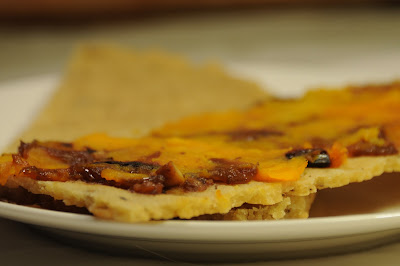OK, I know. I've been bad. I've neglected my blog for a little while now but it's only because I've been on the go constantly for over a week. I've had a break today, so I'm back!
I know I promised Christmas recipes, before Christmas, but I'd like to make it up to you now. I know that some of you are sick of turkey (what?!) but just wait a week or two and you'll want a roast chicken or turkey again. This recipe for stuffing doesn't have to be just for Christmas. I know that I'm going to use it often. I roast a chicken about once a week, and this stuffing will be the perfect accompaniment.
My Granny swears by Paxo stuffing, and that has always been my favourite. This is the closest I have come to re-creating that flavour.
I have altered this recipe from Enjoy Life's website here. I hope you enjoy! And merry be-lated Christmas for all you Christmas-celebrators.
Stuffing
2 ½ C Enjoy Life Crunchy Rice Cereal
2 stalks celery
½ large onion
1 tbsp Herbes de Provence or a combination of rosemary, marjoram, savory, basil, and lavender
1/2-1 tsp dried ground sage (depending on your taste)
1t salt
⅛ t black pepper, ground
About 1 cup of vegetable stock, poultry stock, or water
A few tablespoons of chicken/turkey drippings and roasted onions, or olive oil if you want a veggie version (see note)*
Partially grind the crunchy rice cereal so that it resembles large bread crumbs - this is easiest to do if you pulse your blender/food processor. Put cereal crumbs into a medium bowl. Finely dice celery and onion and add to cereal crumbs. Add herbs, salt, and pepper. Stir to combine. Add stock/water and mix. If you have roasted a turkey or chicken, add a few tablespoons of the drippings and some roasted onions and garlic, if you have them (see note)*. Check seasoning and adjust salt, pepper, and spices to your taste.
To bake a dish of stuffing:
Preheat oven to 350°F.-400°F/ 176°C-204°C. Pour mixture into a greased baking dish with a lid. Bake for about 20-25 minutes (depending on the temperature of your oven) with the lid on, just until the onions and celery are soft. Finish cooking for about 10-15 minutes with the lid off. This allows the excess moisture to evaporate from the stuffing and allow it to crisp up a bit. Serves 4-6.
If you want to stuff your bird:
Add just enough liquid to moisten your stuffing slightly. For our Christmas turkey I stuffed under the skin on the breasts of the bird and it was delicious! I read this on Jamie Oliver's blog here (he is always full of amazing ideas!). The reason for this is that the breasts cook faster than the legs on a turkey. If you stuff the breasts, it helps the turkey cook more evenly, which prevents the turkey breasts from drying out. He suggests not to stuff the inside of a turkey because it prevents it from cooking properly, and can be unsafe.
Alterations:
- If you are allergic to rice but have a favourite bread or cereal, try experimenting with that instead of the Crunchy Rice cereal.
- If you are allergic to celery or onions, simply omit, or replace with veggies of your choice.
- If you are allergic to any of the herbs mentioned, try making your own combination.
Notes:
- * Another note from Jamie Oliver that I have adopted to my cooking is to add onions (and sometimes garlic) to the roasting pan. This prevents spots on your pan from burning, and leaves you with a delicious accompaniment to your roast chicken or turkey. I simply slice onions, and add them to the pan.If using garlic, throw whole cloves in, no need to peel. When they are roasted, just squeeze out the garlic from its skin. I found that the stuffing is at its best with the addition of a few spoonfuls of roasted onions, garlic, and chicken/turkey drippings. Yum!
- Do NOT try substituting puffed rice or crisp rice (like Rice Krispies) for the Crunchy Rice cereal here. It will end up as mush. Tasty, but mushy.
- The Enjoy Life site suggests you can use Crunchy Flax cereal instead of the Crunchy Rice but I have found that the flavour is not as good in this recipe.
- I have included a range for the cooking temperature so that you can cook this along with other parts of your meal, like roasted veggies, and not have to alter the oven temperature.






























